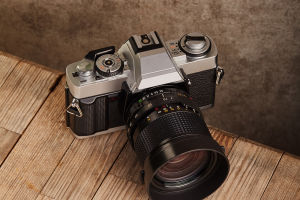Ever turned a corner and found yourself face-to-face with a mural so alive it breathes, or a stencil so sharp it cuts through the noise? Lykkers, this isn't accidental art—it's humanity's oldest dialogue, screaming in color.
Each has its own history and significance, contributing uniquely to the artistic landscape. As communities evolve, so does the art that adorns their surfaces, leaving behind a visual narrative of society's culture and challenges. Urban art transforms bland walls into cultural diaries, echoing ancient whispers and modern shouts.
Ancient Echoes
Before skyscrapers, caves were canvases. Prehistoric artists used ochre and charcoal to sketch mammoths and rituals onto rocky walls. These weren’t mere decorations—they were survival stories. A painting in France’s Lascaux Cave, dating back 17,000 years, captured hunts and hopes, proving art’s role as humanity’s first language.
Mural Roots
The term mural springs from Latin “murus” (wall). Unlike framed art, murals merge with architecture. In Egypt’s tombs, pharaohs commissioned frescoes of harvests and gods. Mexico’s 1920s muralism movement redefined this: after social upheaval, artists turned public walls into tools for unity.
Mexican Masters
Diego Rivera’s Detroit Industry Murals blended indigenous motifs with factory grit. His peer David Alfaro Siqueiros wielded pyroxylin paint for dynamic, textured scenes. Their 50-foot masterpieces in Mexico City’s National Palace didn’t just adorn—they screamed about equality and revolution.
Street Art Emerges
While murals celebrated permanence, 1970s New York birthed rebellion. Teens tagged subway cars with aliases like TAKI 183. When jazz icon Charlie Parker died, “Bird Lives” graffiti bloomed citywide. This wasn’t vandalism—it was raw grief turned public memorial.
Spray Can Evolution
Early tags evolved into elaborate wildstyle lettering. Artists swapped markers for spray cans, mastering stencils and wheatpaste. By the 2000s, anonymous British artist Banksy’s satirical rats made global headlines. His shredded “Girl With Balloon” at auction mocked art-world commercialism.
Modern Techniques
Today’s muralists blend tradition with tech. Brazilian duo Os Gêmeos use airbrushing for dreamlike characters. Others project digital sketches onto buildings before painting. In Berlin, the Urban Nation Museum even preserves street art on removable panels—mixing ephemeral spirit with gallery permanence.
Styles Clash
Abstract murals splash colors like Miami’s Wynwood Walls, where geometric chevrons pulse with energy. Hyperrealism dominates in festivals like POW! WOW! Hawaii, where lifelike portraits tell local legends. Each style debates: Should art beautify or provoke?
Legal Crossroads
Murals often get permits; street art dances with law. Cities like Melbourne designate “free walls” to redirect unsanctioned art. Meanwhile, Paris’s Tour Paris 13 high-rise became a legal graffiti mecca before demolition, proving even temporary art sparks lasting dialogue.
Future Canvases
Architects now weave art into blueprints. Singapore’s Newton Suites features a vertical garden mural by Patrice Butler. Augmented reality apps like Artivive or Adobe Aero animate murals via smartphone—blending physical paint with digital layers.
Final Thoughts
Urban art is more than paint—it’s a heartbeat. From Paleolithic caves to augmented cities, it challenges us to see walls not as barriers, but bridges. Observing and appreciating these expressions encourages deeper engagement with our surroundings, prompting individuals to reflect on their communities and the stories woven into their landscapes.
This understanding acts as a bridge, fostering connection among people as well as between art and society.
Next time you pass a mural, pause. What story does it tell? Whose voice does it amplify? The answer might reshape the way you see the city—and your place in it.


